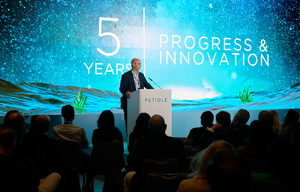Although global private equity fundraising slowed last year, demand in one area is showing no signs of abating.
Less affected by macroeconomic pressures, such as rising inflation and to some extent, higher energy prices, infrastructure investments are proving to be particularly resilient, Daniel von der Schulenburg, managing partner and head of infrastructure Germany, Benelux, and Northern Europe at investment boutique Ardian, said at a media event.
Inflation Hedge
This is partly because revenues in this asset class are mostly adjusted to inflation, and are also often contractually fixed and depend predominantly on a project's completion, von der Schulenburg said, naming a toll road as an example. «For the most part, once built, the number of cars that go on to use a road has a limited impact on the investment case,» he said.
Moreover, the demand for infrastructure financing is high as countries prioritize renewable energy, transportation, and digitization projects, while they aim to fulfill UN sustainability goals involving massive infrastructure investments by 2030.
Within the seven-year timeframe, the EU says over 300 billion euros ($329 billion) are needed for the union to become independent from Russian energy imports. The push to decarbonize the industry is also creating more investment opportunities for companies working to achieve this aim.
Knock On Effect
As an asset class, private markets have matured over the past decades as demand from institutional clients and more recently from high-net-worth individuals and family offices has grown.
Yet the years-long commitment that private equity funds require and the lack of liquidity, remain a drawback for some investors.
To overcome this, investors are increasingly opting to sell off their holdings at a later stage in so-called secondary transactions.«It is becoming a common tool for investors to generate liquidity as well as for fund managers to reposition their portfolios,» managing director Felix Signorell said.
Minimized Blind Pool Risk
Investing in secondaries has the advantage that the fund's risk profile is lower. «We invest in funds where at least 50 percent of the fund commitments have been drawn, which means we usually know the assets we are investing in,» Signorell added.
To be sure, 2021 was a bumper year for secondary transactions with volumes reaching $134 billion globally. While there was less deal flow in 2022, it remained high. Ardian expects this area in private equity to expand significantly once markets pick up again.
Historic Performance
Secondary funds have delivered particularly strong returns in post-crisis years, such as in 2001 after the dot-com bubble and in 2009 after the financial crisis. This could mean that 2023 or 2024 could also deliver outstanding returns, depending on how the segment emerges from the current downturn.




































